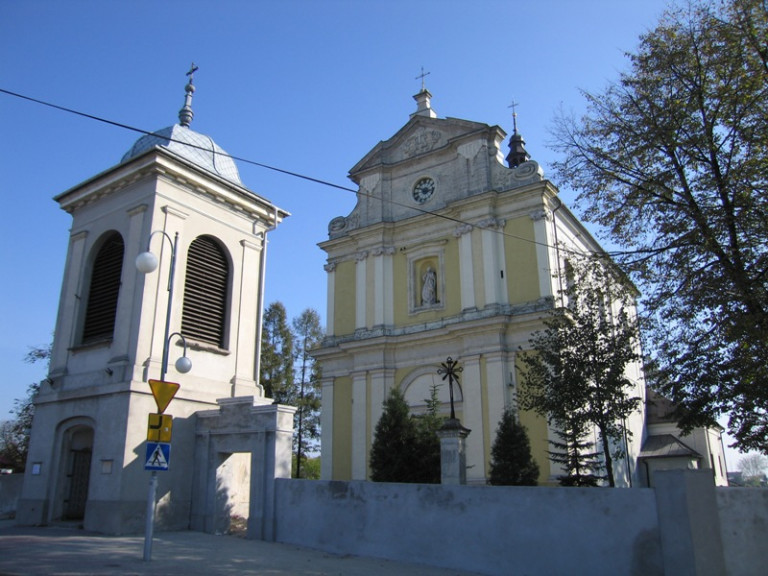
Chmielnik – a town on the crossroads of old trading trails
The name “Chmielnik” comes from a place overgrown with hop or a hop fields (pol. hop – chmiel). It is even reflected in the city’s coat of arms – a green branch with three hops on a red background. The city has a very rich history. The first mention of it comes from the 13th C. and refers to a lost battle of the Polish knights and the Tatars in 1241, which is concerned one of the greatest battles of the 13th century Europe.
In the 16th C. the town became a property of the Oleśnicki family and thanks to their endeavours it obtained municipal rights in 1551 as a privilege from king Zygmunt August (Sigismund II Augustus). Its history is also strictly connected with the Jewish commune, the proof of which is a synagogue built between 1633 and 1634. At that time, the building was located in the centre of the Jewish district and, together with kehilla schools and a Talmudic house, it constituted a prosperous religious centre. The synagogue has been built on a rectangular outline. Inside, there is a clear-span praying room and a bipartite vestibule. Unfortunately, today the building is not in a good condition, nevertheless, the local government assures that it is going to change soon as the architects are already working on a plan of its renovation and adaptation. The building is going to become a place for a multimedia exhibition presenting the Jewish aspect of the city.
The city has preserved its 16th C. urban arrangement, even a later rectangular main square and the bourgeois tenement houses with arches on supports from the 19th century were built according to it. The most valuable monuments in Chmielnik are: the Holly Trinity Church and the late-baroque parish Church of Immaculate Conception of the Blessed Virgin Mary. The building of the second church had been started in 1730 by Jerzy Marcin Ożarowski, the owner of Chmielnik and Crown Great Camp Leader, however, he died 11 years after, while the building was still in progress. Therefore, the legacy was overtaken by his successor Andrzej Moszczyński, the voivod of Inowrocław, who finally completed the sanctuary in 1783. Inside it there are many object from that time, yet the present altar comes from 1886. The elements of the interior worth seeing are: the side naves, the depictions of the Rosary Mysteries and a baptistery. However, the most important and, at the same time, the oldest monument of Chmielnik is a 14th C. church, the mention of which comes from 1354, when the Cracow bishop Bodzanta consecrated it into the Holly Trinity Church, in some sources it appears also a the All Saints’ Church. Another trace in history, which concerns it, are the notes of Jan Długosz, stating that, indeed, in 1440 there had been a wooden church in Chmielnik. The present form of the Holly Trinity Church is dated back to the 16th century.
Since several years, there is an annual festival in Chmielnik – ”The Encounters with the Jewish Culture,” to which even the guests from outside the Świetokrzyskie region come in great numbers. The event is certainly worth attention, but it is also a great opportunity to visit this unique town.



